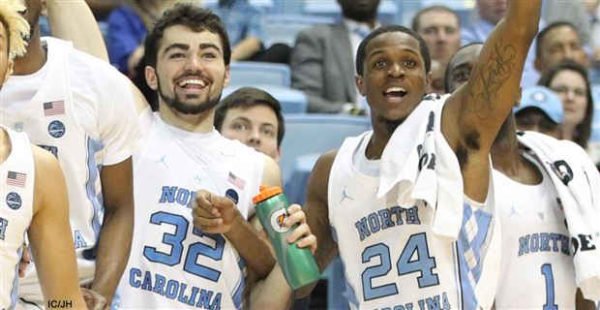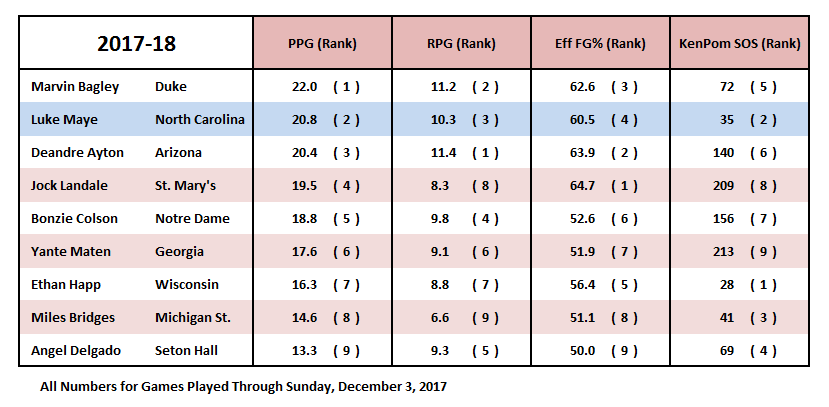Improved Junior Class Keeping North Carolina in the Hunt
Posted by Brad Jenkins (@bradjenk) on December 7th, 2017After losing four key pieces from its 2016-17 National Championship team, many observers expected North Carolina to take a significant step backward this year. And with no proven frontcourt players returning to Chapel Hill, it was widely expected that head coach Roy Williams would need to make some major adjustments to his traditional style of inside-out offense. Through 10 games so far this season, neither of those assumptions have proven true. The nation’s eighth-best team, per KenPom, suffered its only defeat against a powerful Michigan State squad in the finals of the PK80 event — a game in which the Tar Heels logged their worst shooting night (24.6%) in school history.

Juniors Luke Maye and Kenny Williams have given North Carolina fans much to cheer about in the early season. (Jim Hawkins/Inside Carolina)
Joel Berry and Theo Pinson — the Tar Heels’ returning starters — were expected as seniors to shoulder the burden of carrying the team. And while each has made slight increases to his usage and production, they are getting far more help than was originaally anticipated. Berry scores (16.5 PPG) and takes good care of the basketball (10.1% TO Rate) while Pinson anchors the defense and leads the team with 4.1 assists per game. But the main reason these Tar Heels appear to once again be national contenders is because of the improved play of juniors Luke Maye and Kenny Williams. After missing the final 14 games of last season with an injury, Williams was a forgotten man coming into this campaign. He has responded to his new role by becoming the team’s third leading scorer (13.4 PPG) and scoring in double-figures in all but one outing this season. As for his classmate Maye, the numbers speak for themselves. In the below table, we compare Maye’s production with the eight forwards in college basketball who received votes on the AP Preseason All-American First Team.
Not only does Maye clearly belong among the group of top big men in the country, but only the two freshmen phenoms — Duke’s Marvin Bagley and Arizona’s DeAndre Ayton — have been more productive. And it’s not like he has been just feasting on cupcakes, either — North Carolina’s strength of schedule is second only to Wisconsin on this list. As for playing style, this edition of the Tar Heels looks very similar to most of Williams’ teams. They play fast (14th nationally), take care of the ball (74th) and crash the boards on both ends (25th offensively, and 10th defensively). As is the norm for a Williams squad, the Heels are not very concerned with three-point shooting on either end of the floor. They only take 25.5 percent of their field goals from behind the arc, while opponents launch 46.0 percent of their shots from deep (second nationally) and convert those attempts at a robust 38.2 percent clip.
In all fairness, some of thpse numbers may be attributed to the characteristics of North Carolina’s opposition to date. Seven of the Heels’ 10 opponents to date rank among the nation’s top 100 in three-point accuracy, while only one (Michigan State) ranks among the top 150 in offensive rebounding percentage. It will be interesting to see how Williams integrates graduate transfer Cameron Johnson (injured knee) into the lineup when he joins the squad in a few weeks. Originally projected as a starter, Johnson will probably need to fill the role of instant offense off the bench, making a good North Carolina team even better heading into the rigors of ACC play.











































